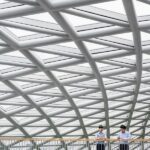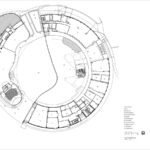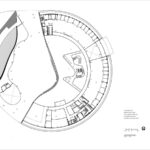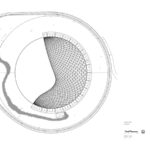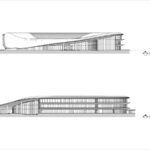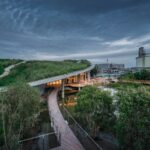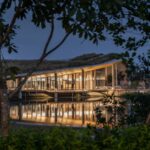Embracing LNG as an Alternative Energy Source
Liquified Natural Gas (LNG) stands as a beacon of hope amidst the global energy crisis, offering a viable alternative in many nations. At the Nong Fab LNG Receiving Terminal, architectural innovation converges with environmental consciousness to educate visitors on the significance, production process, and benefits of LNG.
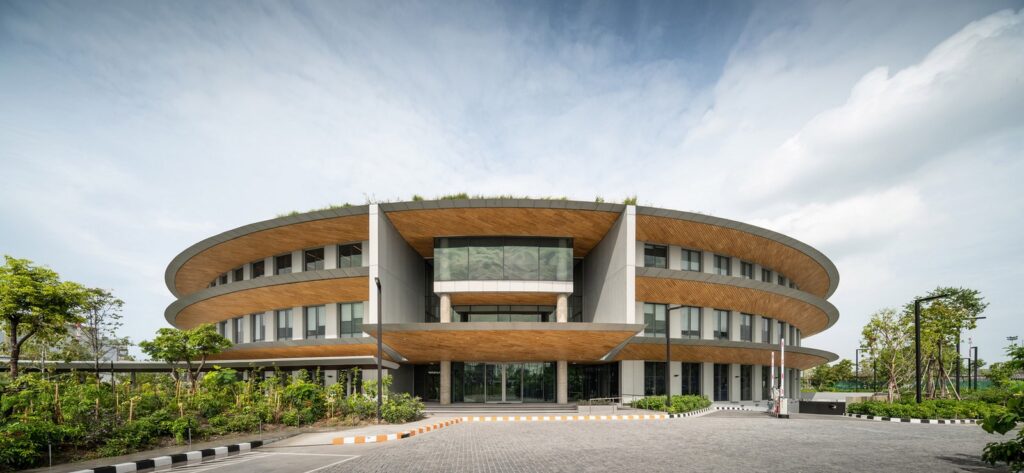
Architectural Concept: Emulating the LNG Tank
Central to the architectural narrative is the emulation of the LNG tank’s unique environment within the main office space. Mimicking the diameter and shape of the LNG tank, the design fosters an immersive experience, bridging the gap between infrastructure and architecture. Natural landscaping, including a green roof cascading to ground level, seamlessly integrates the structure with its surroundings.
Harnessing By-Product Energy for Sustainability
The terminal harnesses by-product cold energy from the LNG regasification process, repurposing it to regulate internal temperatures. This innovative approach not only ensures energy efficiency but also facilitates the cultivation of cold climate flora year-round, enhancing biodiversity and ecological sustainability.

Environmental Integration and Restoration
Externally, the terminal harmonizes with its ecosystem, preserving the original wetland environment and native Hymenocardia trees. Efforts to restore the damaged wetland include recreating natural water flow systems and establishing a large pond for water catchment, rejuvenating the ecosystem and promoting environmental resilience.
Conclusion: A Nexus of Energy Education and Environmental Stewardship
The Nong Fab LNG Receiving Terminal stands as a testament to the fusion of architectural ingenuity and environmental stewardship. Beyond its functional role in LNG reception, the terminal serves as an educational hub, enlightening visitors on the pivotal role of LNG in the global energy landscape while exemplifying sustainable design principles in action.




